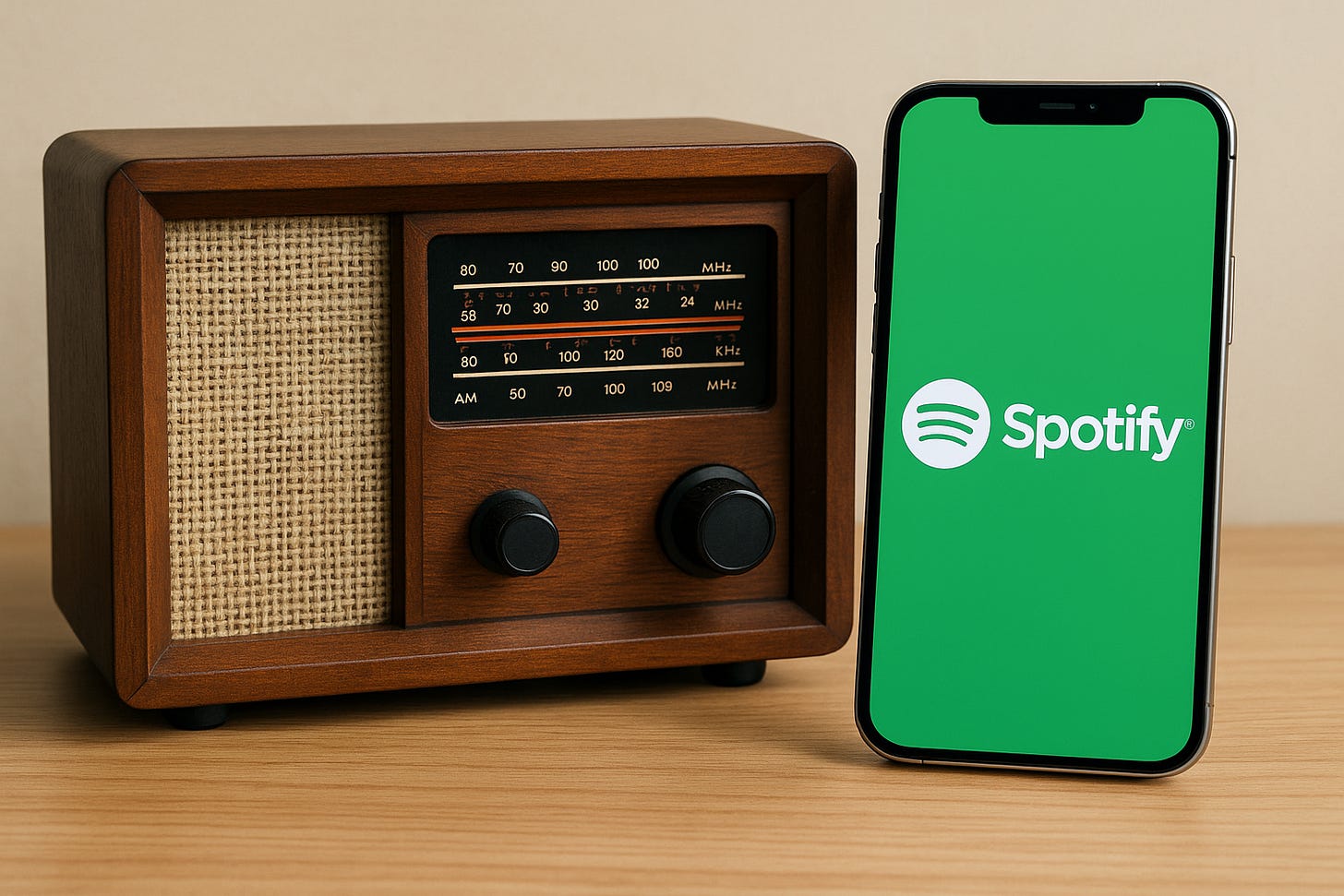Could FM Be Next on the Auction Block?
Radio needs to prepare for a post-dial world
Not long ago, TV stations thought the idea of losing their spectrum to wireless carriers was a fantasy. Then came the FCC’s incentive auction. Billions of dollars changed hands. Broadcasters that took the money gave up their channels. The rest had to “repack” into tighter spaces on the dial.
That set the precedent. Once a spectrum space is considered “underused,” it can be bought and resold.
So far, AM and FM are safe. No FCC plan is aimed at taking radio spectrum — at least, not yet. The Commission’s current fights are higher up the dial, in satellite and 12-gigahertz territory. But radio operators are getting nervous.
Why carriers care
Mobile carriers prize mid-band and high-band frequencies for 5G. That’s where the speed and capacity live — in ranges like 2.5 GHz to 3.7 GHz for mid-band and much higher for millimeter-wave. Those frequencies can carry massive amounts of data, especially with dense networks and advanced antenna arrays.
AM doesn’t deliver that. Narrow bandwidth and long-wave propagation make it noisy and low-fidelity. It’s fine for voice, not for data.
FM sits between 88 and 108 megahertz — in the very high frequency (VHF) range. Its signals travel well and penetrate some building materials, which makes it “prime real estate” in a propagation sense. But the FM band’s 20 MHz width makes it too narrow for broadband or heavy smartphone data. Carriers couldn’t use it for full 5G, but they might eye it for niche or low-rate services.
What else FM could be used for
If radio listening keeps declining, FM could start to look attractive — not for streaming video, but for other specialized uses.
Data-casting and telemetry: FM subcarriers can send small data packets — weather updates, traffic, logistics data, even emergency alerts — to compatible receivers. Microsoft once used this method for its MSN Direct watches, delivering stock quotes and weather via an FM subcarrier.
Internet-of-Things networks: Engineers have proposed allowing low-power IoT devices to transmit short bursts of data in unused slices of the FM band, a form of dynamic spectrum sharing.
Digital broadcasting overlays: Systems like HD Radio and Digital Radio Mondiale already use sidebands on FM frequencies to transmit digital audio alongside analog.
Public safety and emergency alerting: FM’s coverage area makes it a reliable way to deliver region-wide alerts, telemetry, or control data during disasters, but AM coverage is wider.
Industrial and utility control: The FM band’s propagation could support narrowband telemetry for energy, water, and transportation systems, but this would require a lot of coordination to avoid interference.
In short, FM isn’t suited for broadband, but it’s valuable spectrum for low-data, wide-area communication — a class of use that could draw interest from tech and infrastructure industries as traditional radio wanes.
Why broadcasters push back
Taking FM away would be political dynamite. Broadcasters, local officials, and public safety groups would fight tooth and nail — most likely led by giants like iHeart. Radio still handles local emergencies, community voices, and free access for anyone with a cheap receiver.
That’s why the industry is lobbying hard to keep AM radios in cars. Automakers don’t want to bother with broadcast radio, since most drivers can stream any station through the dashboard. Broadcasters argue AM is still essential for emergency alerts. They’re right. But the fact that they need Congress to step in shows how fragile radio’s place in the car has become.
The writing on the wall
Radio companies are already walking away from signals they can’t support. AM outlets — especially Townsquare and Cumulus — have given stations back to the FCC. That doesn’t mean spectrum auctions are coming tomorrow. But it shows the value equation is shifting.
TV broadcasters once thought the idea of losing spectrum was a dystopian fantasy. Then it happened.
If AM and FM are ever seen as underused, auctions are just a matter of time. And if that day comes, “radio” won’t be defined by a dial at all. It’ll be streaming — just like television is finding out. Radio operators need to start thinking about where they’ll be in a “post-dial” world.
And if radio migrates to that new land, how much of it will change when it gets there? Where will the next generation of “DJs” come from — the voices that give you insights into the music and keep you company? They’re already a dying breed. Will the shift to streaming finish them off?
These are questions I couldn’t have imagined when I started in radio 45 years ago. Hell, even 20 years ago. But here we are. And the smart operators might want to start packing up for the move.



